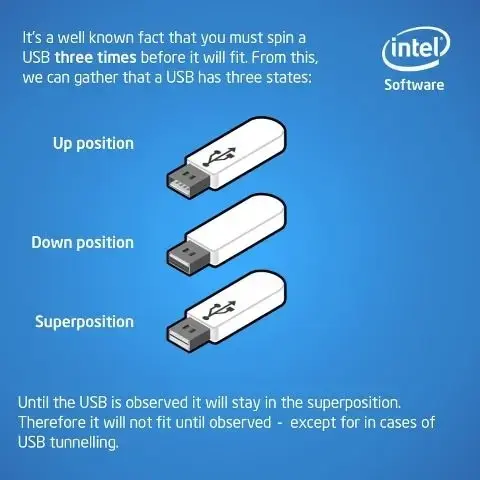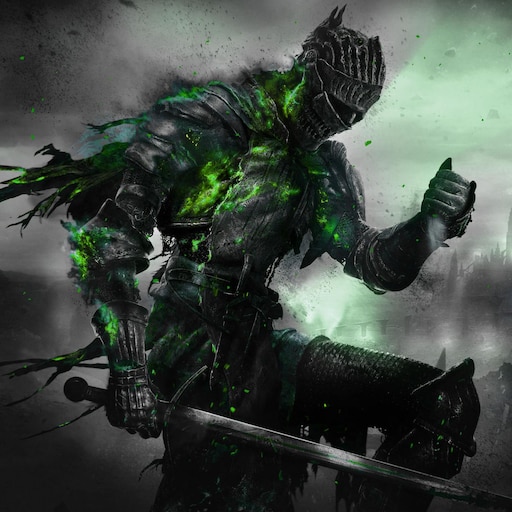Compared to USB-A, not really that much of a game changer (it’s still the most common for me). Though I do not miss the three rotations to get it in.
Compared to Micro-USB? Holy fuck, I almost refuse to buy anything still using Micro-USB ported now. Mainly because I can’t never find the fucking cable for it.
Though I do not miss the three rotations to get it in.
The holes point up or to the right.
But like… not always. Wall adapters (at least US ones) can be plugged in upside down, so if that’s upside down the holes face down. I have a 3d printer who’s motherboard is mounted on the top of the chassis, flipping the USB port so that it’s “upside down”. A lot of cheap dual-USB chargers that have the two USB ports right next to each other have them mirrored, so one faces up and the other faces down.
Granted, I’ve always found the “argh USB!!!” frustration to be more a meme than anything; when I’m plugging in a USB device, I likely know what orientation the male side is (flash drives and the like are usually oriented the same way), and it takes half a second of paying attention when going to plug it in to look at the female port to see what direction it’s meant to go in.
so many of my devices have the ports installed upside down
I think the real game changer here is the USB-PD. I now only bring a single charger for both my laptop and my phone. Also, a lot of different laptops now charge with USB-C, getting rid of the need of different plugs.
Props to the Thinkpad USB-C retrofit hack. Granted they only work with 65w, but it is still great! My Anker Nano GaN charger is only a little bit larger than an ice cube, definitely smaller than most traditional USB charger, yet it packs 65w.
What does GaN stand for in that context?
Galium Nitride. It makes high current DC stuff more efficient (i.e. generates less heat) and requires less circuitry (i.e. smaller devices).
Thank you

I have that GaN brick it’s fantastic and makes the original Thinkpad one look huge.
Fucking awesome, it is. When I travel, I take 1 laptop power cord. Charges my phone, laptop, Switch, and backup battery. (The backup battery’s output ports are USB-A, but it’s got a lil converter cable that stays in the lil bag that the backup battery is stored in.)
It’s the best. So much so that not having usb c, has become a deciding factor if i buy something or not. It also seems a bit of a quality insurance, even if it’s just a little. But electronics with micro or even mini usb is usually just some cheap shit or that old and they are still selling it.
So far it’s a mess.
I still have Micro USB devices, so I need two cables or USB-C→Micro USB adapter.
I have PCs without USB-C ports, so another adapter needed USB-C → USB-A.
But, I can now “dock” my new-ish laptop with only one USB-C ↔ USB-C cable to a monitor.
Monitor gives power.If your PC has PCIE slots you can get a USB-C card for around $25
Make sense, thanks.
I’m still in the messy stage, but I’ve made preparations for C. Pretty soon I’ll get a newer used phone and tablet, and they’re both going to be type C.
Currently I have a few things that use C, so I’ve already got some cables and chargers for them. Once the transition is complete, I’ll get rid of a bunch of old cables.
Not at all, its slightly more convenient.
If all cables were created equal then it’s kind of a big deal that laptops can now charge via USB-C. Proprietary chargers can suck my ass.
It’s been more of a pain in the arse than initially expected.
Most motherboards (for example) only have 2-4 USB-C ports, meaning that I still need to employ A-C and C-C cables for peripherals etc.
My main gripe is that the standard just tries to do too many things without clear delineation/markings:
-
Is it a USB 2.0 (480Mbit), 5Gbit, 10Gbit or 20Gbit cable? Can’t really tell from the plug alone.
-
More importantly, for charging devices: How the heck do I determine maximum wattage I can run?
For all its faults, at least the blue colour of a USB-3.0 plug (or additional connectors for B/Micro) made it easy to differentiate !
Now I’m eyeing up a USB Cable tester just to validate and catalogue my growing collection! 🤦🏻♂️
USB Cable tester
Great idea, and then:

I was actually thinking coloured O rings to define specs, but that still means I’d need to have a colours guide somewhere too…
…yours might be a more practical solution. 🤔
You could fit some key numbers and letters on those O rings, I like it!
It’s even more annoying that there are different possible pinouts in the port itself without clear labling. So always use the one cable that came with the peripheral, or you have a chance to fry it
I wonder about this too. Can I plug my laptop’s USB-C charger into my phone? Or is that a big nono
Yes, you can. The charger and the device communicate between one another what they can support, and pick the highest one they both agree on.
E.G. my laptop charger can charge at full speed (100W) for my MacBook, but only at 20W for my iPhone.
That bit is pretty straightforward and transparent to end users (there are a few rare conditions where devices might not agree on the fastest, and have to fall back to a slower one); the issue is more with cables not having sufficient gauge wire, or missing connections that prevent the charger and device from communicating their full functionality.
Should be okay, that USB-PD would detect the correct voltage and current.
I charge by Bluetooth headphones ‘pod’ with my Steam Deck charger and it seems to be ok.
The deck charger uses USB PD. It will charge anything that supports the standard as fast as possible (up to its rated 65W) and use normal 5v USB for everything else.
Yes.
For the power matter, you don’t. The device being charged, the charger, and cable does.
If you mean what is the maximum wattage that will actually be used, that should be the maximum possible between the charger, cable, and device. So look at their specs. Whichever has the lowest maximum, is what the others will match.
USB PD defines a protocol for the device and charger to determine max safe power. If the cable is replacable (not attached to the charger), it must be rated for PD and be able to tell the charger it can handle more than just the usual 5 volts at 2 amps.
USB PD chargers only output the maximum safe amount of power. That’s why I can use my 65W steamdeck charger to charge my phone if I want to. It just outputs normal USB charger power if the device on the other end can’t verify it can handle more.
It’s also why my SteamDeck charger is what I use to fast charge my phone, because it can actually talk to it using the USB PD protocol to request the voltage and amps it needs to fast charge.
To clarify; I have a 100W Ugreen Nexode 4 Port USB Charger that I use to charge my laptop (~60W), Steam Deck (~40W), iPhone (~20W) and AirPods (~5?W).
The problem is if my original product cable has gone walkabout temporarily and I need to use a random one to stand in - there is no clear way of telling if I’m accidentally using a 5W-max cheap cable to try and keep my laptop charged while working.
Obviously there are some context clues depending on cable thickness etc., but with how common cosmetic braiding is becoming a thing - even that’s getting harder to rely on.
Some kind of cable labeling would be nice.
Just recently I had a tech store guy gently but repeatedly insist to me that a certain USB cable was a USB 3 cable because it was type C on both ends. I didn’t wanna argue with him, but the box clearly said “480 Mbit”, so it was just a type C charging cable.
Of course the box designers were hoping you’d make that mistake so they didn’t write USB 2 on there, just the speed. And most boxes won’t even have that, you’ll just have to buy it and see.
But I mean if someone who spent their whole life fixing computers can get something that basic wrong, then it’s really a hopeless situation for anyone who isn’t techy.
And of course once it’s out of the box it’s anyone’s guess what it is. It’s a real mess for sure.
-
A big one. No more brittle micro usb, which would eventually become loose and start falling out when charging. Being able to charge my laptop using my phone charger is also good.
That’s impressive, how many watts is your phone charger? I would have assumed you could do the opposite but thought the laptop would have laughed when you attached a small stream to it.
I use an old phone charger, when working outside my home. My goal when using it is to keep the charge/uncharge ratio positive. Tho when at home my devices share a 100W charger.
With a laptop and phone which both can use it my backpack while travelling is so much lighter and less bulky. For me it absolutely was a game changer, I just don’t like that I need to carry a USB a to C adapter for all the legacy USB A ports.
So much harder to solder, making repairing my stuff more difficult :(
Also, a USB cable is no longer a USB cable. Now I have to guess what the rated wattage was, if it’s power only/data only/mixed.
All in all, a step back in my opinion.
Thats interesting - how many wires are in the actual sleeve, compared to an older USB?
Oh wow, yeah that must indeed be a pain to solder. Though I guess there’s some redundancy built-in, such that if one wire goes down the cable can still deliver something?
Though I guess there’s some redundancy built-in, such that if one wire goes down the cable can still deliver something?
You guessed wrong! If one is misconnected the whole thing breaks down :) It’s a nightmare for repairability, as the plug is often the first thing to fail
The receptacle is the issue - it can have up to 24 pins (though usually it’s 12ish), all bunched up in just a slightly larger space than on a micro usb receptacle which has 4 pins. So it takes some good skill to replace.
Power only/power and data already existed with Micro USB, so that part didn’t get too much worse.
Power only USBC cables are super against the standard and i don’t think data only cables can exist at all?
Works great, rarely have issues with the port breaking unlike prior small usb standards, it’s nice how ubiquitous it is so I have way less random cable connectors around.
Really hasn’t been much of one. I still own devices that charge from MicroUSB, a lot of peripherals are still USB-A, there hasn’t been any significant movement by the industry overall to move everything to C, so mostly it means I just need to carry more cables.
Nitpick, there are no devices that charge with an USB-A port. USB-A is the side that supplies power, the side receiving power is USB-B.
USB-C did away with the distinction.
True, but keyboards, mice, wireless adapters etc. haven’t moved to C yet. I use PCs and desktop peripherals and industry adoption if USBC has basically stopped 1/4 of the way in.
And how would you describe a wired keyboard or web cam with a hard wired connection to the device and only a USB-A end?
Your nitpick is not warranted. He never said charge with A.
I have a flashlight/sd card based mp3 player/bluetooth speaker/FM Radio/backup battery that charges with an A->A cable.
It’s this Product, with a different branding: https://a.co/d/94y3lxc
Not really, can’t plug a type a into a c port
Last week I found out that there are off-brand batteries for my DSLR cameras that can be charged directly through USB-C so I don’t have to pack a different charger for every camera. Let that sink in!
Overall pretty great, in a pinch I can charge my laptop on a Nintendo Switch power supply. Now if I could just upgrade the last few remaining Micro-USB and Lightning devices without spending a fortune…
Its convenient and superior to Micro. But mostly its just nice that both mine ans my wife’s phone uses the same cord.
Not at all a game changer, for me.
I mean, it’s just another and one more type of cable. Sure, in theory it’s simpler than many various cables and it’s even less stupid than the previous USB types, but it’s still a mess.
At least, for non-geek me, those cables are a mess as I need to be able to distinguish between the exact same cable to find which one is USB-C or Thunderbolt, between the various versions of USB-C itself, and then between USB-C that comes with or without power delivery, and with what power limitation? And then, despite USB-C supposedly being a standard there are still too many cables that just won’t work with certain devices because reasons.
Add to that the many USB-C docks (and dongles) that work… more or less reliably and more or less as marketed (even more so under Linux, but those issues exist under Mac and under Windows as well).
Older cables and ports were cumbersome, and thick and whatever but, as far as I’m concerned, for the most part they just worked like they were supposed to. And I never had an issue knowing which cable to plug into which port as they all looked, you know, different.
Nowadays, I have to label each one of my USB-C cable with some masking tape so I can identify it in a glimpse without wasting my time trying them all one by one.
Edit: some clarifications.
It changed my economy game.
Now I have to buy an USB-C to USB-A adaptor to plug USB-C stuff into my already standing devices. Honestly, no idea why didn’t they make it connector-compatible. Wasn’t that the entire point of the “U” in “USB”?
They really wanted to put an end to this meme.

But manufacturers wanted a micro usb replacement and this is what we got.
They did make USB-A cables that had a universal (up and down) connector near the end. Got one with my JBL Flip. There is a middle piece that moves to one side or the other depending on how you plug it in.

Oh that’s cool. I wonder how good its endurance is.
Wow hadn’t seen that image in a good while!
Pretty much no way to do so without losing most USB-C benefits.
What are those benefits? The only potential one I have direct experience with (besides speed) is that the connector is reversible, but even that’s small-time and a flat out objective downgrade compared to the circular connectors of the 90s, which could be plugged in regardless of orientation.
IIUC USB-C puts less mechanical stress on the port and more on the cable connector, so instead of the port breaking the cable should break.
Circular connectors wouldn’t be backwards-compatible either, and would be much harder to manufacture at the size of USB-C. I actually can’t think of circular connectors with more than 2 data channels that can be plugged in in any rotation - do you have an example? All the ones I can think of (PS/2, XLR) have a set orientation.
Because USB-A sucks donkey balls and needed to die in a fire.
Sure, if you want; as long as whoever does that retrofits all my USB-A devices.
You can, trivially, with a handful of very small, completely unobtrusive adapters.
There is literally nothing redeemable about USB A’s design.
Wasn’t that the entire point of the “U” in “USB”?
Nah, the point of the “U” in “USB” is so that devices communicate in a standardized way through a standardized bus. The port itself doesn’t need to be universal—after all, USB-C is I believe the first time that the host port and the device port are the same, previously there was always an A for host and B for device, even with mini-USB and micro-USB.


















